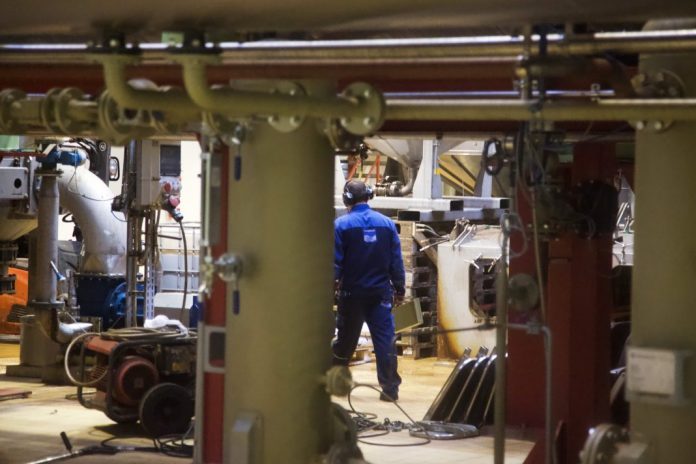Will multiple factories will be forced to shut down?
In early November, Skretting, the world’s largest fish feed producer, announced that it will shut down its UK production. The competition became too tough. Production capacity in the region exceeds the underlying market by more than 50 percent.
The feed plants in the UK supply primarily Scotland and Ireland, but can also deliver to Iceland, the Faroe Islands and Norway. It’s a short way by boat across the North Sea, and the problem of overcapacity is true not only in the UK. Of course, this raises the question of whether there are several factories at risk of shutdown.
The feed manufacturers keep thier cards close to the chest. Nobody wants to say exactly how much feed they produce, but SalmonBusiness has investigated what they can potentially produce.
Skretting
Skretting Norway has three factories located in Stavanger, Averøy and Stokmarknes, respectively. Stavanger and Stokmarknes have two production lines each and Averøy has four. Skretting states that they estimate that one production line has an annual capacity of 100,000 tonnes. It provides an approximate capacity of 200,000 tonnes in Stavanger, 400,000 on Averøy and 200,000 tonnes at Stokmarknes.
Leif Kjetil Skjæveland, Communications Manager at Skretting Norway, said to SalmonBusiness that all production they make is order based and that 800,000 tonnes went therefore is a theoretical capacity.
“Unfortunately, we can not provide current market information as the number of tonnes produced. But what we can say is that 800,000 tonnes is a theoretical capacity. We have adapted our factories, the number of employees and commodity purchases to today’s market and have optimized production relative to it,” he said.
In addition to the three in Norway, Skretting has a factory in the UK which has a capacity of 100,000 tonnes.
 BioMar
BioMar
BioMar has two factories in Norway. One on Karmøy and one on Myre. These have a production capacity of 340,000 tonnes and 260,000 tonnes respectively, according to BioMar.
In addition to those in Norway, BioMar has a factory in Denmark, formerly Dana Feed, and one in the UK where they do not want to say anything more than they have a “capacity of more than 100,000 tonnes each.”
Neither BioMar wants to say anything about how much they actually produce with a total capacity of about 700,000 tonnes.
“I can not say anything about how much we actually produce, but what I can say is that our factories produce capacity for most of the year. Out of season we have lower production, said Jan Sverre Røsstad, press contact at BioMar.
Marine Harvest
Marine Harvest is the newly arrived player in the feed market, and the one who has started a rocket and changed the underlying competition conditions. Feed has gone from high-tech to low-margin store in a few years.
The factory at Valneset in Bjugn municipality opened in 2014 and has an annual capacity of 220,000 tonnes. In addition, Marine Harvest has a factory at Kyleakin with a capacity of 170,000 tonnes of feed.
Marine Harvest, formerly Skrettings VIP customer, is the only feed manufacturer to ensure that all feed is fed, as the company is feeding its own fish.
Cargill
Cargill, as the sole feed producer, did not want to provide production capacity at its three plants in Norway, so we have had to trust ourselves in other sources.
“Production capacity is something we do not go with. That’s Cargill’s policy,” said Hanne Dankertsen, Communications Manager at Cargill Aqua Nutrition.
A few years ago, the Halsa factory produced over 200,000 tonnes annually. After losing supplies to Marine Harvest, production was reduced to slightly over 100,000 tonnes. Therefore, we can count on theoretical capacity of 200,000 tonnes.
In 2009, EWOS reported that the company’s plants at Halsa, Florø and Bergneset combined produced 415,000 tonnes. As a starting point, and if we add upgrades made in Florø about 150,000, we can assume that Cargill today has a total capacity of approximately 550,000 tonnes left.
In addition, Cargill has a factory in Bathgate, UK, which has a capacity of 50,000 tonnes.
Bakkafrost, Aller Aqua and Polarfeed
In addition to the aforementioned, Aller Aqua has a factory in Denmark with a capacity of approximately 80,000 tonnes.
Bakkafrost also has its own factory. It is located in Klaksvik on the Faroe Islands, called Havsbrún and today has a capacity of 100,000 tonnes. According to the company, with a simple upgrade they can have the capacity to produce 150,000 tonnes. Havsbrún has a production capacity that significantly exceeds the feed requirement of the owner Bakkafrost.

